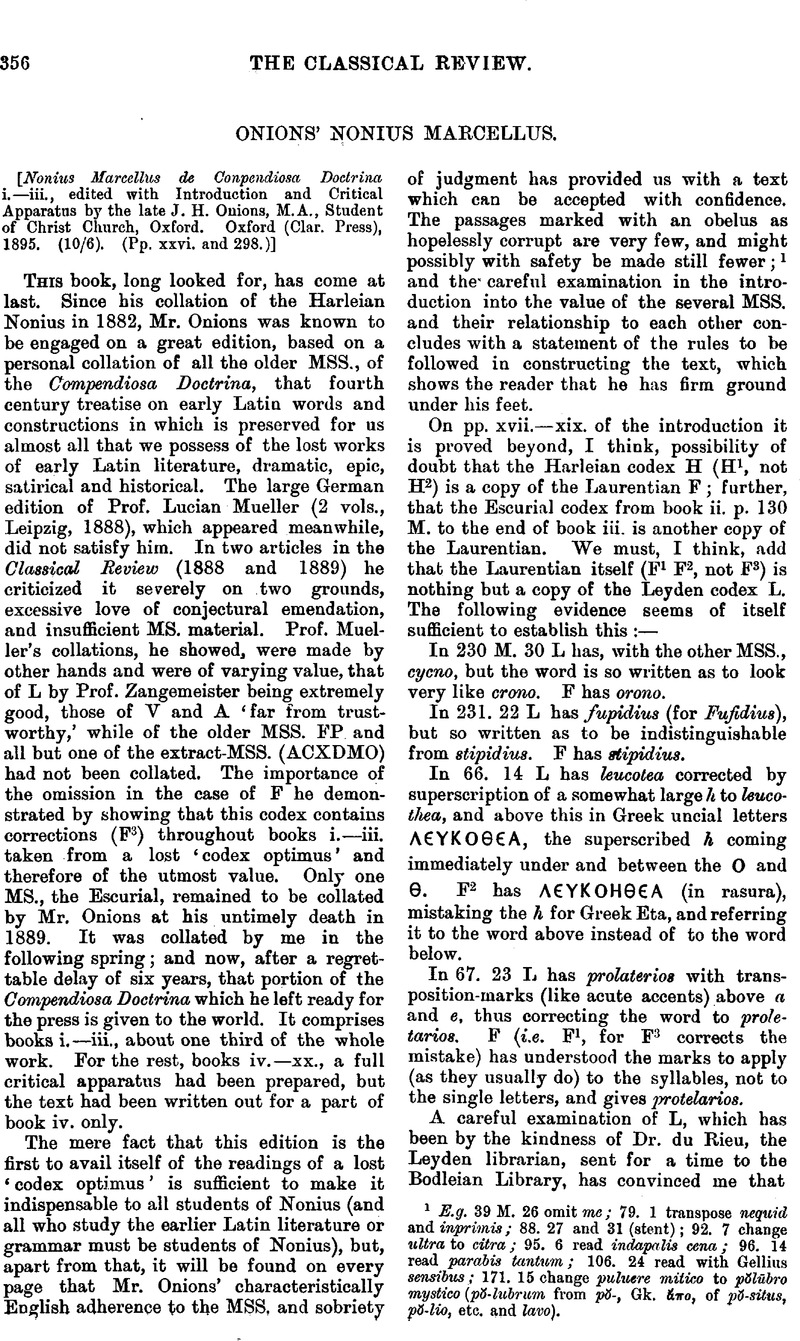No CrossRef data available.
Article contents
Onions' Nonius Marcellus - [Nonius Marcellus de Conpendiosa Doctrina i.—iii., edited with Introduction and Critical Apparatus by the late J. H. Onions, M.A., Student of Christ Church, Oxford. Oxford (Clar. Press), 1895. (10/6). (Pp. xxvi. and 298.)]
Published online by Cambridge University Press: 27 October 2009
Abstract

- Type
- Reviews
- Information
- Copyright
- Copyright © The Classical Association 1895
References
page 356 note 1 E.g. 39 M. 26 omit me; 79. 1 transpose nequid and inprimis; 88. 27 and 31 (stent); 92. 7 change ultra to citra; 95. 6 read indapalis cena; 96. 14 read parabis tantum; 106. 24 read with Gellius sensibus; 171. 15 change puluere mitico to polūbro mystico (po-lubrum from pc-, Gk. πο, of p-situs, p-lio, etc. and lavo).
page 357 note 1 I need not add the line from Virgil, 229. 29, bis patet in praeceps tantum, to which F1 adds t, the initial of the next word in Virgil's line tendit, and F2q.s.a. (que sub auras (!)). All the MSS. end at tantum. F2 has a similar addition to another line of Virgil, 182. 28, rumpere et obductum uerbis uulgare, where F2 adds d, the initial of dolorem. A glance at Mr. Onions' critical apparatus for this line will show that the Archetype omitted dolorem.
page 357 note 2 Of course one can be more certain about F1 than F2.
page 357 note 3 It seemed to me, when I saw the Paris MS. P, that there was little possibility of -RC- having been the spelling of P1. The fact that E, a MS. so closely connected in the first two books with P, has -RG- is strong proof that this was the original spelling of P.
page 357 note 4 But not the original of F3, as Mr. Onions shows. This may have been the Archetype itself.
page 357 note 5 These are used by Glossary-compilers of the time (L. Mueller ii. pp. 270 sqq.).


